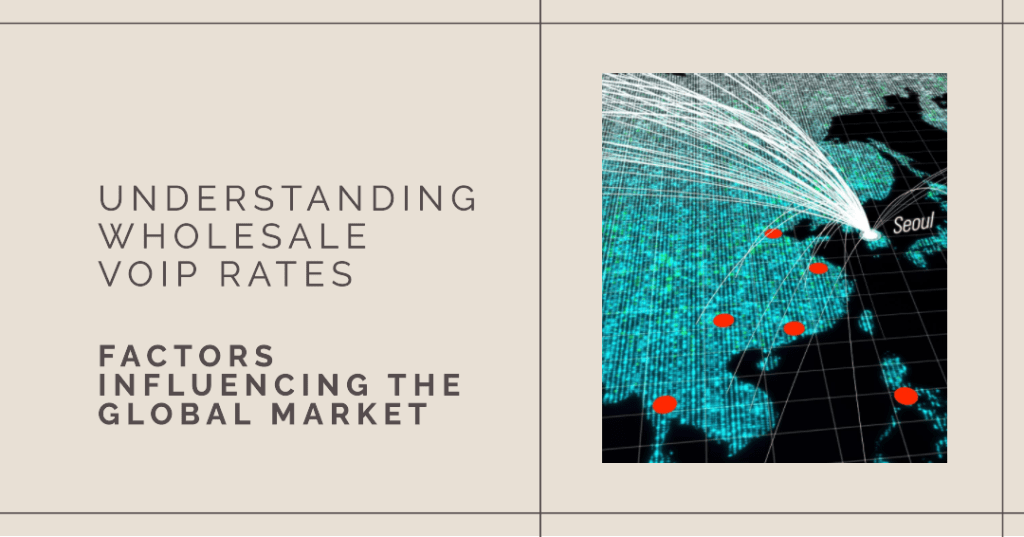Introduction
In today’s digital age, Voice Over Internet Protocol (VoIP) has revolutionized the way businesses communicate. As the demand for affordable and efficient communication solutions grows, understanding the intricacies of Wholesale VoIP Rates becomes crucial. This article delves deep into the factors influencing these rates and the market dynamics at play, offering invaluable insights for anyone venturing into the VoIP industry.
The insights shared in this article come from years of experience in the Wholesale VoIP industry. Having navigated the complex waters of VoIP pricing, market trends, and technological advancements, the author brings a wealth of knowledge to the table, ensuring readers get expert and authoritative information.
Understanding Wholesale VoIP Rates
Wholesale VoIP Rates are the prices at which VoIP services are bought in bulk by carriers and then sold to end-users or other resellers. These rates play a pivotal role in determining the final pricing of VoIP services for consumers and businesses. With the right understanding and strategy, carriers can optimize their offerings, ensuring both affordability and quality.
Factors Influencing Wholesale VoIP Rates
- Call Volume and Capacity: Higher call volumes often lead to better rates. However, it’s essential for carriers to ensure their networks can handle the increased traffic. Scalability and efficiency are key. For a deeper dive into the relationship between call volume and pricing, check out our blog on VoIP Routes and Their Impact on Call Quality.
- Geographical Location: Rates can vary based on the destination of the call. International calls, regulatory fees, and taxes can influence pricing. Our article, VoIP vs. Traditional Telephony: Key Differences Explained, offers more insights into this.
- Quality of Service (QoS): A superior network infrastructure that guarantees high-quality calls can command higher prices. Understanding the metrics that determine quality, such as ACD, ASR, and PDD, is crucial. Dive deeper into this with our blog on How to Use VoIP Metrics to Improve Your Business.
- Interconnection Agreements: Bilateral agreements between carriers can significantly impact rates. Effective negotiation strategies are vital to secure competitive rates.
- Seasonal Demand: Just like any other industry, the VoIP market experiences fluctuations in demand. Providers often adjust their rates during peak seasons to maximize profits.
- Competition: The competitive landscape of the VoIP market directly influences pricing. Staying updated on market trends and adjusting pricing strategies accordingly is essential.

Market Forces Shaping Wholesale VoIP Rates
Technological Advancements: Innovations like software-defined networking (SDN) have a direct impact on call routing and costs. As technology evolves, carriers need to adapt to stay competitive.
Regulatory Environment: Changes in telecom regulations can influence VoIP rates. It’s essential for carriers to stay updated on these changes and adapt their strategies accordingly.
Shifts in Consumer Behavior: As consumer preferences change, so does the demand for VoIP services. Adapting pricing strategies to these shifts can ensure sustained profitability.
Economic Factors: Economic conditions, currency fluctuations, and other macroeconomic factors can influence VoIP rates. Carriers need to be agile in their pricing strategies to navigate these challenges.
Mergers and Acquisitions: Industry consolidation can reshape the competitive landscape, influencing rates and interconnection
agreements.
| Market Force | Impact on Rates | Description |
|---|---|---|
| Technological Advancements | High | Evolving VoIP technology impacts call routing and costs. |
| Regulatory Environment | Medium | Regulatory changes can affect VoIP rates. |
| Shifts in Consumer Behavior | Medium | Changing consumer preferences impact VoIP demand. |
| Economic Factors | Low | Economic conditions and currency fluctuations can influence rates. |
| Mergers and Acquisitions | Medium | Industry consolidation can affect the competitive landscape and rates. |
Conclusion
Understanding the factors that influence Wholesale VoIP Rates is crucial for carriers looking to succeed in the industry. By staying updated on market trends, technological advancements, and regulatory changes, carriers can optimize their pricing strategies, ensuring profitability and growth. As the VoIP industry continues to evolve, carriers that adapt and innovate will undoubtedly lead the way.
For those interested in diving deeper into the world of VoIP and exploring partnership opportunities, Progressive Telecom LLC offers a wealth of resources and expertise.
Author’s Bio
With years of experience in the Wholesale VoIP industry, the author has witnessed the evolution of the market firsthand. Their insights are shaped by hands-on experience, deep industry knowledge, and a commitment to helping businesses navigate the complex world of VoIP.